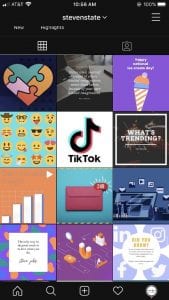
How To Create Content For Each Sale Funnel Stage
Even though you may not realize it, you go through a process before buying something, unless, of course, you are an impulse buyer. This process is called a sale funnel. It refers to “the buying process that companies lead customers through when they are purchasing products.” But for any company to succeed, its process must have quality content. Having quality content is having leadership, which is a part of attraction marketing. Here is how to create quality content:
Phases of a standard funnel
- Top of the funnel (TOFU): awareness stage
At this point, your followers do not know they have a problem or are just now realizing they do. TOFU involves driving traffic to you as well as providing free surface information with “how to”, “improve”, and “prevent” content.
- Middle of the funnel (MOFU): consideration stage
When a potential buyer gets here, they graduate to a potential lead. They need the best solution for their problem and are willing to make possible future purchase commitments. For this stage, begin providing deep content with a wide coverage of topics.
- Bottom of the funnel (BOFU): decision stage
Here, someone is making a final purchase decision. Still, there is no guarantee. A little nudge from the right content and assistanced from a call to action will win the customer over.
[Read to learn about the importance of lead generating content marketing]
Creating sale funnel content for each stage
- TOFU
Content can be in the form of an eBook, checklist, podcast, whitepaper, etc. It should be rich with key words, compelling, informational, correctly format, and delivered in a timely manner. Do not attempt to sell at this stage because the potential customer is not yet considered a qualified lead. Make your content both easy to understand and enjoyable to read. Try to obtain the potential customer’s personal contact information at this point through forms and landing pages to use later in the lead qualifying process.
- MOFU
As your visitors transition to this stage, your content should transition with them. This content can be in the form of case studies, demonstration videos, trial offers, cost estimates, etc. You should offer expert, in-depth content. For example: “The Complete Checklist for a Refurbished Phone.”
As they look to expand their personal understanding, usher in lead nurturing techniques such as personal engagement and email marketing. This is usually the longest phase because potential customers need to weigh their options and research further. However, an advantage to this wait is that you can take time to filter out unqualified leads and instead focus your resources on marketing qualified leads.
- BOFU
When your leads reach the final stage, you will probably be a little anxious, but don’t push too much. Offer content to make them understand why you are the best best option for them. Position yourself as a solution to their problem. Be careful not to sound too much like a sales person, and focus your content on their needs. “Guidelines For Success” or “How to Implement Inbound Marketing Strategies” are some examples of content you should provide in order to convert your leads into sales.



















 Looking for ways to boost your social media brand presence? Knowing how to increase brand engagement on Instagram, the latest and hippest social media platform app, is a great start. People are online all day due to working from home. Virtual shopping has risen due to restrictions and pandemic fears. As we have geared toward a more online world, your brand’s presence on the web is more important now than ever.
Looking for ways to boost your social media brand presence? Knowing how to increase brand engagement on Instagram, the latest and hippest social media platform app, is a great start. People are online all day due to working from home. Virtual shopping has risen due to restrictions and pandemic fears. As we have geared toward a more online world, your brand’s presence on the web is more important now than ever.



